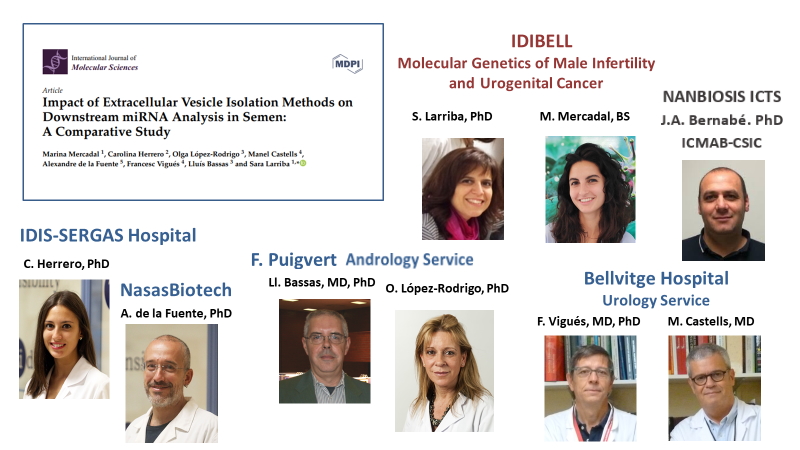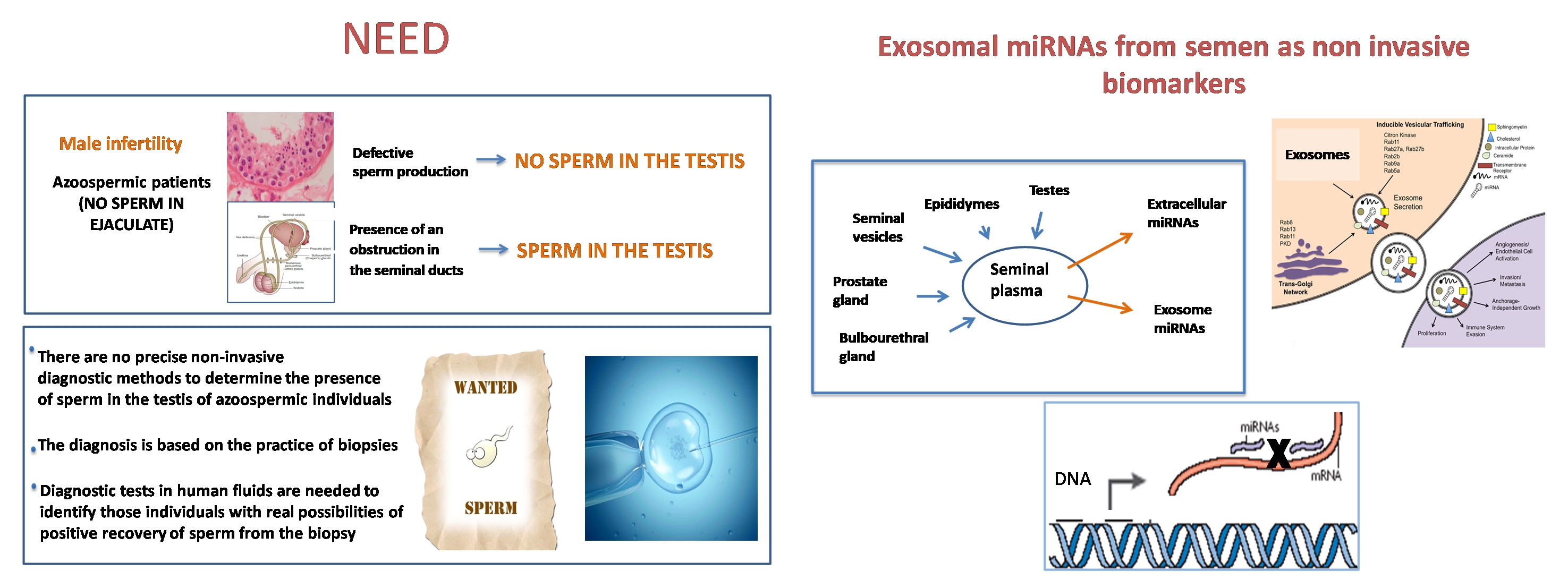Impact of Extracellular Vesicle Isolation Methods on Downstream miRNA Analysis in Semen
An article by Sara Larriba of the Human Molecular Genetics Group of Bellvitge Biomedical Research Institute (IDIBELL), recently published by the International Journal of Molecular Science. entitled “Impact of Extracellular Vesicle Isolation Methods on Downstream miRNA Analysis in Semen: A Comparative Study“, acknowledges NANBIOSIS ICTS for its participation in the research results. The nanoparticle tracking analysis was performed by the ICTS NANBIOSIS U6 Biomaterial Processing and Nanostructuring Unit.
Abstract:
Seminal plasma (SP) contains a unique concentration of miRNA, mostly contained in small extracellular vesicles (sEVs) such as exosomes, some of which could be clinically useful for diagnosis and/or prognosis of urogenital diseases such as prostate cancer (PCa). We optimized several exosome-EV isolation technologies for their use in semen, evaluating EV purifying effectiveness and impact on the downstream analysis of miRNAs against results from the standard ultracentrifugation (UC) method to implement the use of SP sEV_miRNAs as noninvasive biomarkers for PCa. Our results evidenced that commercial kits designed to isolate exosomes/EVs from blood or urine are mostly applicable to SP, but showed quantitative and qualitative variability between them. ExoGAG 3500× g and the miRCURY Cell/Urine/CSF 1500× g methods resulted as equivalent alternative procedures to UC for isolating exosomes/sEVs from semen for nanoparticle characteristics and quality of RNA contained in vesicles. Additionally, the expression profile of the altered semen sEV-miRNAs in PCa varies depending on the EV isolation method applied. This is possibly due to different extraction techniques yielding different proportions of sEV subtypes. This is evidence that the exosome-EV isolation method has a significant impact on the analysis of the miRNAs contained within, with important consequences for their use as clinical biomarkers. Therefore, miRNA analysis results for EVs cannot be directly extrapolated between different EV isolation methods until clear markers for delineation between microvesicles and exosomes are established. However, EV extraction methodology affects combined models (semen exosome miRNA signatures plus blood Prostate specific antigen (PSA) concentration for PCa diagnosis) less; specifically our previously described (miR-142-3p + miR-142-5p + miR-223-3p + PSA) model functions as molecular marker from EVs from any of the three isolation methods, potentially improving the efficiency of PSA PCa diagnosis..
Article:
Impact of Extracellular Vesicle Isolation Methods on Downstream miRNA Analysis in Semen: A Comparative Study. Marina Mercadal, Carolina Herrero, Olga López-Rodrigo, Manel Castells, Alexandre de la Fuente, Francesc Vigués, Lluís Bassas and Sara Larriba. Int. J. Mol. Sci. 2020, 21, 5949; doi:10.3390/ijms21175949










